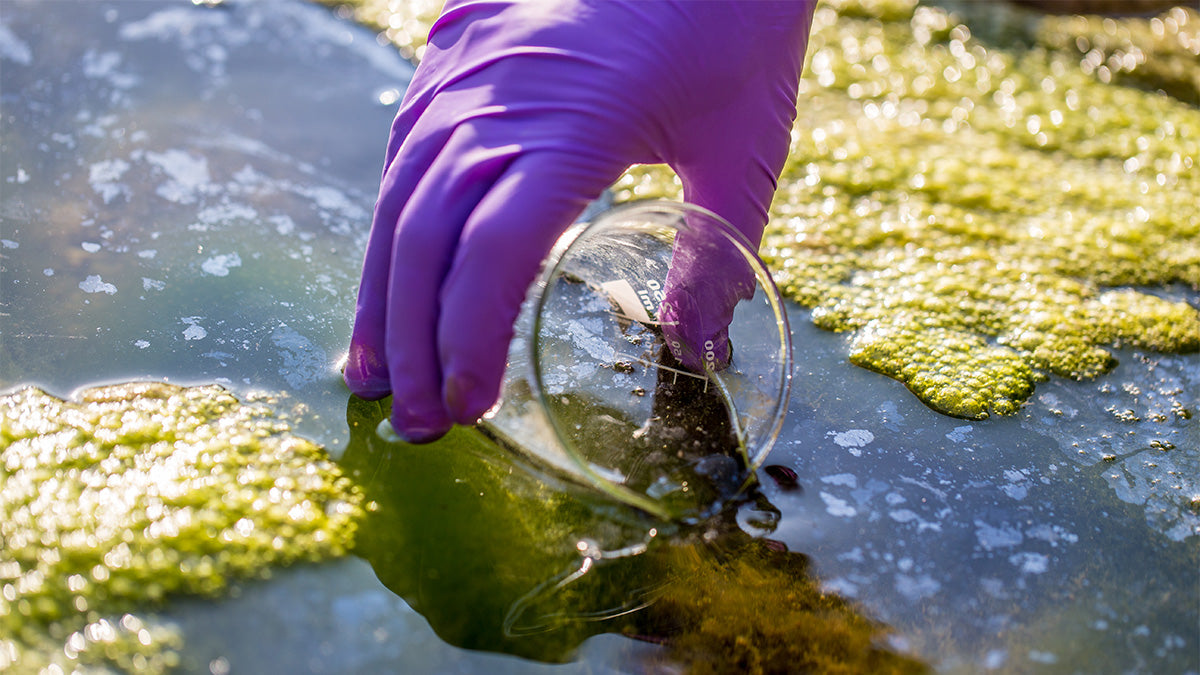Controlling algae in ponds or other aquatic environments is essential to maintain water quality and prevent issues such as overgrowth, unsightly appearance, and potential harm to aquatic life. It's important to note that management of algae does not mean total eradication. There will always be some algae present in water bodies, but preventing algae and harmful cyanobacteria from overrunning systems is crucial. Here are several methods for controlling algae:
Physical Removal:
- Manual Removal: Physically scoop out or rake algae from the water's surface or bottom. Regular removal can help keep algae in check.
- Biological Control:
- Algae-Eating Fish: Introduce algae-eating fish species like tilapia, grass carp, or catfish into the pond. These fish can help control algae by grazing on it.
- Daphnia and Zooplankton: Introduce natural predators like daphnia and zooplankton, which feed on algae and help maintain a balanced ecosystem.
- Chemical Control:
- Algaecides: Algaecides are chemical treatments designed to kill or inhibit the growth of algae. They should be used cautiously, following manufacturer instructions, and considering potential impacts on other aquatic life.
- Copper-Based Products: Copper-based algaecides can effectively control algae, but excessive use can harm fish and other aquatic organisms, so it's crucial to monitor copper levels.
- Nutrient Management:
- Reduce Nutrient Inputs: Algae thrive on nutrients like nitrogen and phosphorus. Minimize nutrient runoff from fertilizers, animal waste, or other pollution sources into the pond.
- Buffer Strips: Plant native vegetation around the pond to create buffer strips that can filter out nutrients before they enter the water.
- Aeration:
- Aeration Systems:Install aeration systems like fountains, aerators, or diffusers to increase oxygen levels in the water. Adequate oxygen can discourage the growth of certain types of algae, particularly anaerobic blue-green algae.
- Shade:
- Shading:Provide shade to the pond by adding aquatic plants, floating covers, or artificial structures. Reduced sunlight can limit the growth of algae. Certain pond dyes, such as AquaShade, can give your pond a beautiful look while also limiting sunlight under the surface.
- Beneficial Bacteria:
- Beneficial Microbes:Add beneficial bacteria and enzymes designed to break down organic matter in the pond. This can reduce nutrient levels.
- Regular Maintenance:
- Proper Pond Maintenance:Ensure the pond is properly maintained, including regular cleaning, removal of decaying organic matter, and the prevention of excessive nutrient input.
- Algae Screening:
- Algae Screening:Install screens or netting to physically block algae from entering water intake systems or recreational areas.
Check out this video for more information on algae control.




